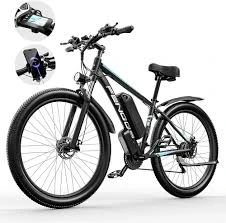Feb . 20, 2025 06:06 Back to list
derailleur on mountain bike


Safety and expertise are paramount; misalignments can lead to accidents or damage. If you're unsure at any point, consulting a professional or referring to specific manufacturer guidelines can offer additional insights tailored to your particular bike model. Brands often provide detailed manuals emphasizing the nuances of their derailleur systems. Remember, over-tightening screws or improper adjustments can exacerbate the very issues you're attempting to resolve. Another aspect not to overlook is chain wear and cassette teeth condition. Even a perfectly adjusted derailleur can't compensate for a worn chain or damaged cassette. Regular inspection of these components ensures your drivetrain’s longevity and optimal performance. Replace them as needed to maintain efficiency and avoid excessive stress on the derailleur. For riders eager to achieve peak performance consistently, investing in specialized tools, like a derailleur alignment gauge, proves invaluable. This tool verifies hanger alignment, a frequently overlooked area that can lead to suboptimal shifting if bent or misaligned. Notably, the derailleur adjustment process can vary slightly depending on whether your bike employs a single or dual chainring setup. Single-chainring configurations often require simpler adjustments but necessitate precision to handle larger cassette gear ranges. Conversely, dual chainring setups, common in more traditional mountain bikes, require attention across both front and rear derailleurs for harmonious performance. Ultimately, mastering derailleur adjustment transforms not just your biking experience but endows you with the confidence and authority of understanding a critical component of your bike. As with any skill, practice and patience are your best allies. The satisfaction derived from a perfectly executed gear shift reaffirms the importance of this essential expertise in every mountain biker's toolkit.
-
In-Depth Guide to Ebike Frames: Design, Use & Future Trends
NewsNov.25,2025
-
Discover Top E Bike Brand Insights, Specs & Future Trends | Yanline Bike
NewsNov.24,2025
-
Green E Bike – The Future of Sustainable Urban Mobility
NewsNov.24,2025
-
Ruffian eBike: Durable, Efficient Electric Bikes for Modern Mobility
NewsNov.23,2025
-
Comprehensive Guide to the Global E Bike Market and Future Trends
NewsNov.23,2025
-
Understanding Electric Bicycle Range: A Complete Guide for Smarter E-Bike Use
NewsNov.22,2025
-
Ceron Electric Bike – Efficient, Sustainable Urban Mobility Solutions
NewsNov.22,2025




